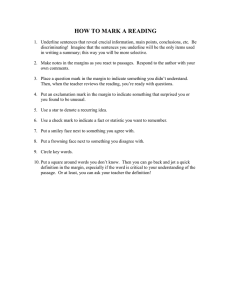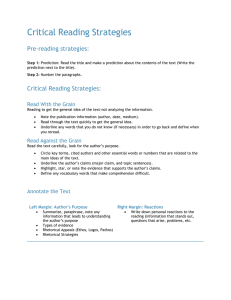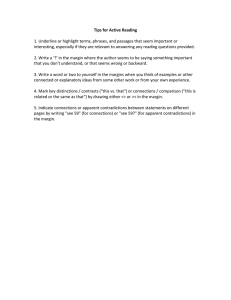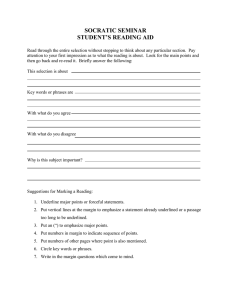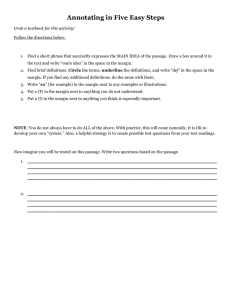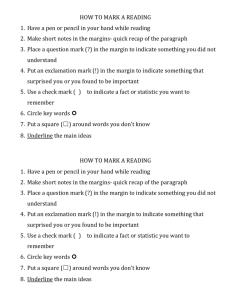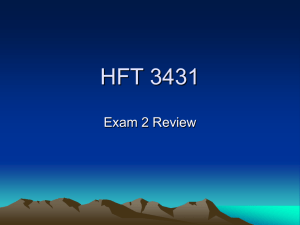Annotating Fiction: VIVA CAPS Reading Strategy
advertisement
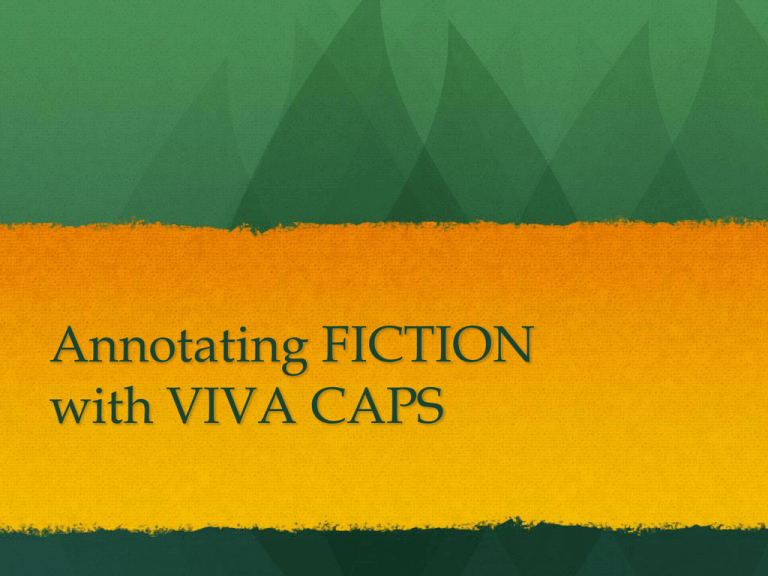
Annotating FICTION with VIVA CAPS V = Visualization Draw a quick sketch of the action or images from the text. It doesn’t need to be fancy; it just needs to help you understand what you just read. I = Inferencing Make an inference when you think you can read between the lines. Consider what is being said, and what is actually meant. Make observations about how characters interact with one another. Think about the setting, mood, and tone of the writing. Jot your inferences in the margin of the text, and begin each with “I think,” “I feel,” “I believe” etc. The Ladder of Inference V = Vocabulary Underline any words, allusions, or people of which you are unsure. You will need to look these up. Please be sure to underline anything that you seem unsure about; it will only help you more while you read! A = Admitting Confusion Indicate where you are confused by placing a question mark in the margin of the text. Once you are no longer confused, write OK in the margin. Remember, it is normal to feel confused when you read. Part of becoming a better reader is being able to reflect on this confusion and learn ways to “fix” your comprehension. C = Connections Make a connection between yourself and the book, between this book and another you have read, or between the book and the world. Make your connections AUTHENTIC. It is of NO BENEFIT to you to make false connections. Identify connections by using an exclamation point (!) to indicate a strong, emotional response. Then label each as either PC = personal connection, LC = literary connection, and WC = world connection. A = Ask and Argue Stop and ask questions where you have them. These can be things you wonder about, or clarification questions. Stop and argue with the text when you don’t agree with something the characters do or the author writes. Write a AA along with your questions in the margin of the text. P = Predictions Make a prediction about what might happen next in the text. Consider places that you think you see foreshadowing. Think about what a character’s decisions might be. Also, be sure to take note of the title of the book and the title of the chapters; these might be clues about things to come! Precede each prediction with a . S = Summarizing After reading a paragraph or so, stop and summarize what you have just read. These are quick notes to yourself to help you to remember what you have read and to reflect on your reading. Each summary should be written in the margin of the text and identified with a (S).
